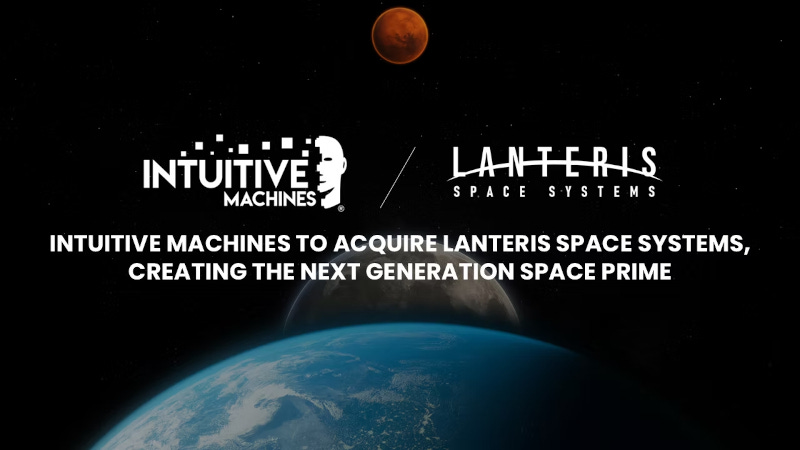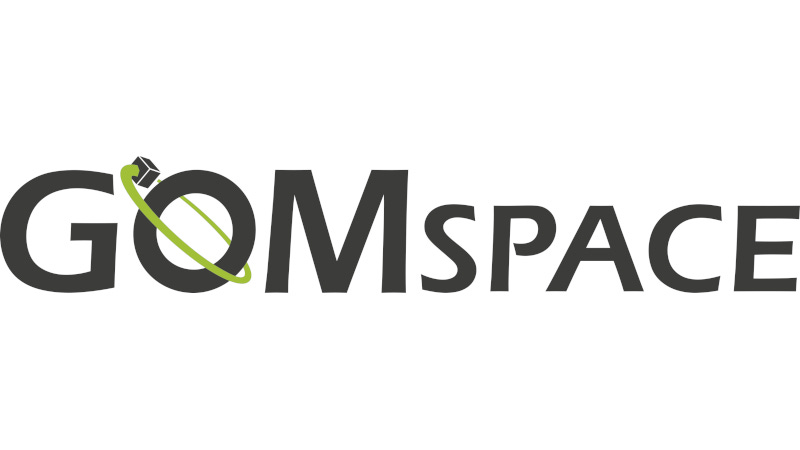Without much fanfare, President Donald Trump announced on Truth Social and X that he was renominating Jared Isaacman to be the next NASA Administrator.
In the social media post, Trump said Transportation Secretary Sean Duffy has “done an incredible job as Interim Administrator of the National Aeronautics and Space Administration (NASA). I am pleased to nominate Jared Isaacman, an accomplished business leader, philanthropist pilot and astronaut, as Administrator of NASA.
Isaacman was nominated earlier this year for the post, and appeared to be poised for easy Senate confirmation before his nomination was abruptly withdrawn by Trump, who said the action was due to a “thorough review of prior associations.” He then added NASA Administrator to the fairly long list of duties assigned to Transportation Secretary Duffy.
Trump said Isaacman’s “passion for space, astronaut experience and dedication to pushing the boundaries of exploration, unlocking the mysteries of the universe, and advancing the new Space economy make him ideally suited to lead NASA into a bold new era.”
-0-
A definitive agreement has been reached for the acquisition of Lanteris Space Systems, formerly Maxar Space Systems, from Advent International LLC by Intuitive Machines. Lanteris is a spacecraft manufacturer with a record of delivering a highly reliable family of spacecraft for national security, civil, and commercial customers.
The transaction is priced at $800 million, consisting of $450 million in cash and $350 million in Intuitive Machines Class A common stock, subject to adjustment. The transaction is expected to close in the first quarter of 2026, subject to customary regulatory approvals and closing conditions. As a stand-alone company, Lanteris is a cash generating business. As a combined company, Intuitive Machines expects to have adequate cash on hand for continued operations.
In alignment with the Intuitive Machines vision, the acquisition of Lanteris positions Intuitive Machines as a vertically integrated, next generation space prime that can design, manufacture, deliver, and operate missions from Earth orbit to the Moon, Mars, and beyond.
-0-
The 18th edition of the Novaspace ‘Earth Observation Data and Services Market’ report signals a decisive market shift: geopolitical instability and AI integration are accelerating demand for defense-grade EO capabilities. Sovereign control and precision intelligence now dominate buyer priorities, with customers demanding uncompromised access to both premium resolution and rapid revisit rates, reshaping the commercial EO landscape for the decade ahead.
Over the past year, geopolitical tensions have prompted nations to seek sovereign observation capabilities, fueling demand for commercial EO solutions. This surge has pushed the EO data market to $2.2 billion in 2024, growing at a 7% CAGR since 2019, with defense applications accounting for over 65% of data demand. Simultaneously, the EO Value-Added Services (VAS) market reached $3.2 billion, also growing at 7% CAGR, and projected to reach $5 billion by 2034.
Despite potential budget realignments in the United States, Novaspace anticipates no major slowdown in EO activity. Instead, a more coordinated use of EO data across government agencies is expected, extending its application from strategic planning to tactical-level operations.
The next frontier in EO lies in data fusion, the seamless integration of multi-sensor inputs into actionable intelligence. This evolution is giving rise to specialized service providers capable of orchestrating complex, multi-source architectures.
-0-
A new world record for wireless optical power transmission has been set by Star Catcher at NASA’s Kennedy Space Center in Florida. The demonstration surpassed the previous benchmark set by DARPA.
In less than eight months since debuting its power beaming technology, Star Catcher recently completed a series of historic optical power beaming tests at NASA’s Kennedy Space Center to validate core technologies for its orbital energy grid, the Star Catcher Network. Using an advanced suite of multi-wavelength lasers, the team delivered more than 1.1 kW of electrical power to commercial off-the-shelf solar panels at Space Florida’s Launch and Landing Facility. The most recent record high was 800 watts set by DARPA in May 2025. Star Catcher delivered more than 10 megajoules of energy throughout the test campaign.
To date, Star Catcher has signed six Power Purchase Agreements collectively valued in the tens of millions of dollars in annual recurring revenue through the end of the decade. These agreements have been signed with organizations operating across core markets including orbital data infrastructure, remote sensing, and satellite platforms.
-0-
Artificial intelligence (AI) is being applied to spacecraft propulsion with a new physics AI foundation model that is being designed by Northrop Grumman and Luminary Cloud. The model is capable of rapidly designing a spacecraft thruster nozzle.
Using Luminary Cloud’s Physics AI platform, with help from NVIDIA’s Computer Aided Engineering product team, Northrop Grumman will leverage its experience in propulsion physics to build an AI foundation model capable of designing a higher-performing spacecraft thruster nozzle.
Through this collaboration with Luminary Cloud, Northrop Grumman says it is continuing to leverage NVIDIA’s expertise to accelerate development of AI in its advanced systems, as well as pushing the boundaries of innovation, laying the foundation for breakthroughs in space from optimizing propulsion systems to developing next-generation spacecraft.
-0-
A component purchase order valued at $1.5 million has been placed with GomSpace North America, a subsidiary of GomSpace Group AB, by a leading global service provider.
The order includes advanced spacecraft subsystem components to support a forthcoming satellite mission. Delivery is scheduled for the first half of 2026.
GomSpace will supply components from its established line of high-performance nanosatellite power and command systems, known for their flight heritage and suitability for complex commercial and government applications.
This order contributes to GomSpace’s ongoing footprint expansion in the Americas and strengthens its role enabling resilient multi-satellite mission architectures around the world.
-0-
All that, from AI design to spacecraft components, has to do with supply chains. And In Depth this week, we take a comprehensive look at the Eutelsat/OneWeb supply chain ecosystem.
Initially launched in 2012 as WorldVu Satellites Ltd., OneWeb has survived bankruptcy and multiple mergers to be reborn as Eutelsat/OneWeb, boasting a constellation of 648 satellites in low Earth orbit at an altitude of approximately 745 miles, arranged across 12 polar orbital planes following a Walker-Star configuration that ensures consistent global coverage.
The transformation of OneWeb’s supply chain reflects broader industry trends toward vertical integration, outsourced component manufacturing, and multi-orbit satellite architectures. Unlike SpaceX’s Starlink, which maintains strict internal production controls for critical satellite components, OneWeb adopted a highly outsourced supply chain model that delegates production to regional Tier 2 parts manufacturers, creating opportunities for diverse supplier engagement while introducing coordination complexity.
OneWeb’s manufacturing ecosystem centers on the Airbus OneWeb Satellites joint venture, established in 2016 as a strategic partnership between Airbus Defense and Space and OneWeb to design and manufacture the satellite fleet. In January 2024, Airbus completed acquisition of Eutelsat’s 50% stake in the Airbus OneWeb Satellites joint venture, making Airbus the sole owner and consolidating manufacturing control.
The outsourced supply chain model creates distinct tiers of supplier engagement. Tier 1 suppliers include major aerospace contractors responsible for critical subsystems, while Tier 2 component manufacturers execute production of discrete electronic components, power systems, structural elements, and thermal management systems.
The July 2022 announcement of Eutelsat and OneWeb’s merger fundamentally restructured OneWeb’s supply chain strategy and competitive positioning.The merger was finalized in September 2023, creating Eutelsat Group with dual-orbit capabilities enabling multi-orbit service delivery across complementary frequency bands and coverage patterns.
The consolidation delivered immediate supply chain rationalization. Eutelsat Group now operates as a single integrated company, maintaining OneWeb as the designated brand name for LEO constellation operations and services. This structural clarity eliminated redundancies in ground operations, customer support infrastructure, and regulatory coordination while maintaining separation of GEO and LEO satellite operations and supporting infrastructure.
OneWeb supply chain optimization directly supports penetration of premium service verticals where operational performance justifies elevated service costs. Aviation and maritime services, as well as government and military applications are examples of those verticals.
OneWeb’s supply chain is entering a critical expansion phase as Eutelsat executes a comprehensive modernization program targeting a 2026-2030 horizon. Current operational performance validates OneWeb’s technical architecture and ground segment integration, with demonstrated capability to deliver superior latency and polar coverage supporting premium service verticals including aviation, maritime, and government communications. Manufacturing scaling through Airbus OneWeb Satellites’ Merritt Island facility combined with specialized supplier partnerships has enabled production rates previously unprecedented in satellite manufacturing.
Looking forward, OneWeb’s supply chain success depends on maintaining supplier performance through expansion cycles, managing geopolitical disruption risks, and integrating advanced digital technologies while controlling cost escalation.
Paid subscribers can read the full analysis on The Journal of Space Commerce under the “In Depth” tab. And while you’re there, learn how LEO satellite constellations are solving the rural broadband crisis, and check out our profile of The Institute of Space Commerce.
And those are some of the top stories we covered for you on The Journal of Space Commerce this week. Space Commerce Week is a production of Ex Terra Media. You can get daily updates on space commerce by subscribing to The Journal of Space Commerce on Substack at www.exterrajsc.com. And please consider becoming a paid subscriber. Whether you’re a space professional, an investor or enthusiast, paid subscribers have first access to premium articles and podcasts focused on the new space economy. Just visit www.exterrajsc.com and help keep The Journal of Space Commerce independent as we chronicle, cajole and, when necessary, critique the commercial space industry.


















